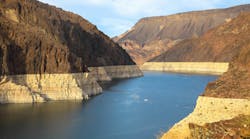It was 1962 when 13-year-old Graham Parker picked up the book Silent Spring by Rachel Carson. So captivated was the young teen by its contents that it catapulted him into a career in which he would make numerous contributions to the field of energy efficiency, and ultimately be honored for his contributions. In 2012, he was named into the Association of Energy Engineers Hall of Fame. Parker is a senior staff engineer with the Pacific Northwest National Laboratory (PNNL) in Richland, WA, and has put in more than 40 years in PNNL’s Technology Planning and Deployment Group in the Electricity Infrastructure and Buildings Division.
He has worked as a project manager and principal investigator on $85 million worth of research projects for both government and private sector clients. The resulting innovations have left an imprint on the scientific and technology community throughout the US with respect to energy from its generation, to its distribution, to its end uses. Parker is a contributing author to several Federal Register publications of energy conservation standards and test procedures, has more than 120 publications to his name, and has presented more than 80 papers and briefings at national and international conferences. He has organized and chaired a number of sessions at those conferences. Parker has passed along his vast store of knowledge through the development of training material, as well as having led classes and workshops for public and private-sector energy and environmental managers.
What He Does Day to Day
Parker retired from full-time work at PNNL in January 2014 but continues part-time work for the laboratory. His hours vary greatly and involve numerous activities, including designing and managing experiments conducted in the PNNL Lab Homes, a project that is the first of its kind in the Pacific Northwest region. PNNL purchased two custom factory-built 1,500-square foot double-wide homes and set them up, side by side, on its campus to conduct energy research, including the performance of highly insulating (R-5) windows. One home, the Baseline Home, mimics an average home in the inland eastern Pacific Northwest region. The other, the Experimental Home, tests new technologies for energy efficiencies. Occupancy is simulated to account for human activity. The homes feature controllable circuits, dual heating systems, environmental sensors, and a weather station.
Parker also undertakes project activities for US Army clients to meet energy and water conservation goals at their installations. He writes proposals for future research and works with the Pacific Northwest Region’s energy community to advance energy efficiency and demand response. “In my spare time, I serve on the Regional Technical Forum, the Utility Energy Forum, the Association of Energy Engineers World Energy Engineering Congress planning committee, and the working group for the Certified Energy Manager exam,” he says.
What Led Him to This Line of Work
The spark that arose when encountering Silent Spring led to a lifelong interest in science for Parker, including a degree in chemical engineering. “My early career at the lab focused on air pollution impacts and mitigation, both outdoor and indoor,” he says. “My work in the Bonneville Power Administration-funded End Use Load and Conservation Assessment Project in the 1980s was my introduction to building energy/sciences and energy technology, and my career has revolved around that business since.”
What He Likes Best About His Work
“In my field of work, the landscape is constantly changing with new challenges every day. I therefore look forward to learning something new each day . . . and I do. This is particularly the case working at a national laboratory, given that I collaborate with some of the brightest and best researchers in the world who constantly challenge me in all my project work.”
His Greatest Challenge
Parker says his greatest challenge “is keeping up with and applying the new and emerging technologies and technology solutions to the daunting issues facing the world in providing energy under climate-constrained conditions.”


